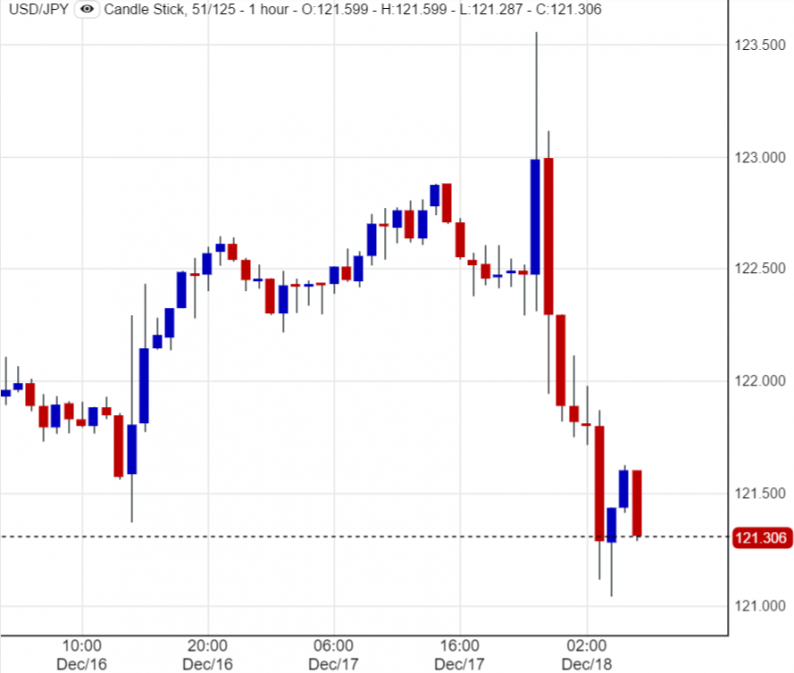For all the talk that the BOJ would unleash more stimulus, buy REITs, more ETFs (both existent or non-existent), or outright stocks, today the USDJPY did something it has not done in 7 weeks: the world’s preferred carry trade currency just slumped to the lowest level since early November. If it wasn’t forthe recent bounce in crude, and if the traditional USDJPY-ES correlation pair had not broken down as a result, the S&P would be well below 2000 at this moment.
One reason for this is the epic confusion delivered by the BOJ one week ago, when instead of delivering its traditional “forceful” intervention, Kuroda & Co., disappointed the market by presenting half-measures which sent the USDJPY briefly spiking only to see it plunge shortly thereafter.

But another, perhaps more troubling catalyst, was the call overnight by JPM’s Tohru Sasaki, Tokyo-based head of Japan markets research, who as Bloomberg reports, warned that the USDJPY will gain 110 next year from about 121 now, the most bullish among around 60 forecasts compiled by Bloomberg. Worse, he sees the equilibrium exchange rate at “below 100.”
Sasaki believes that the time to be contrarian has arrived: “What investors like to hear is that the yen is weak and stocks are up — but if everyone’s constantly betting that way, at some point they’re going to get burned,” Sasaki, who worked at the Bank of Japan for more than a decade before joining JPMorgan in 2003, said in a Dec. 18 interview. “It’s possible that equity prices keep going up forever, because everyone is working to maximize their returns. But in the forex market, it will never happen — there’s an up and down.”
If correct, this is a big problem for the BOJ, for Japan, Inc., for Abenomics and certainly for the Nikkei, which has soared in recent years only because of the Yen’s devaluation, as Japan – unlike Europe – has actually reaped the profitable benefits of export-stimulating currency debasement. Recall













Leave A Comment